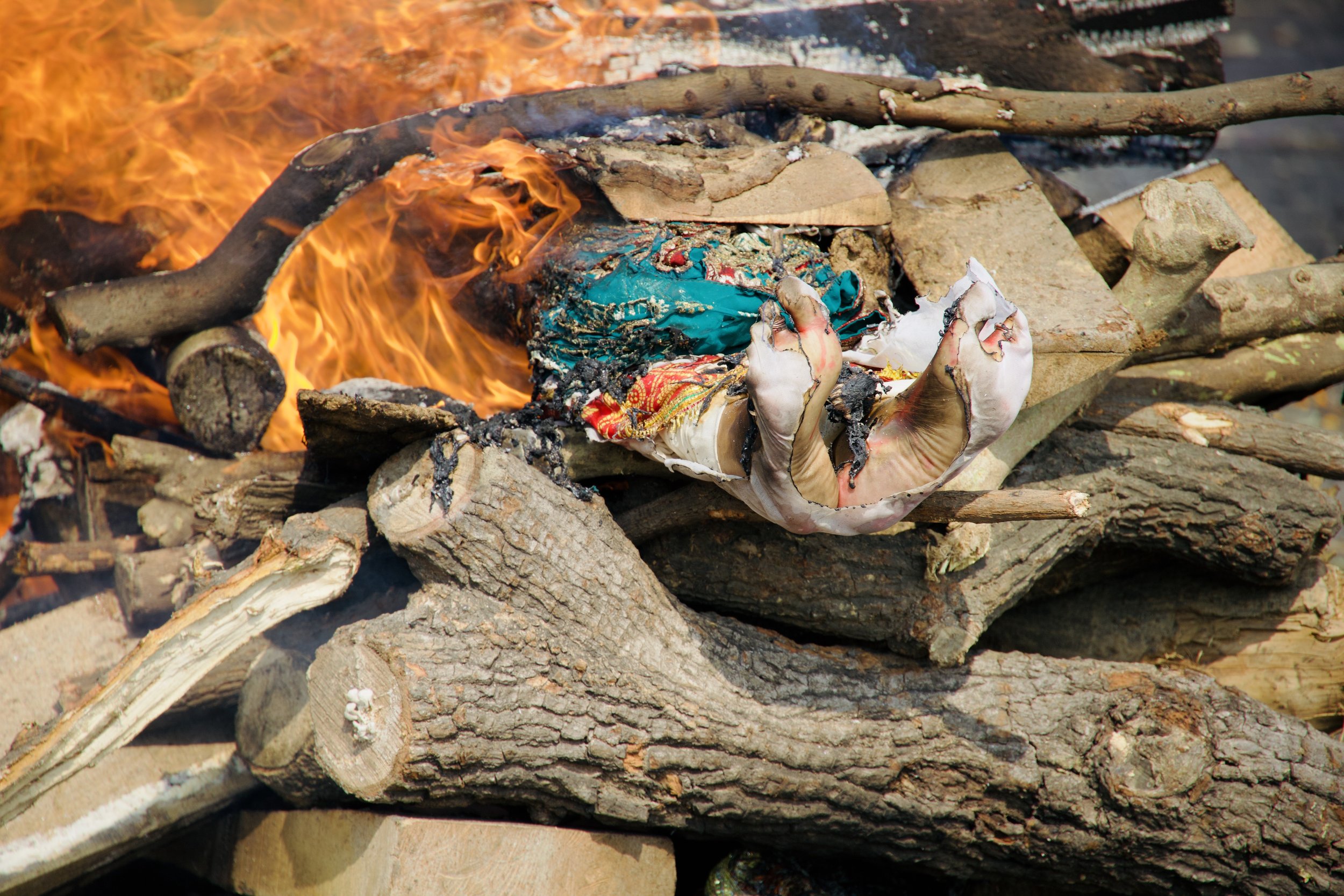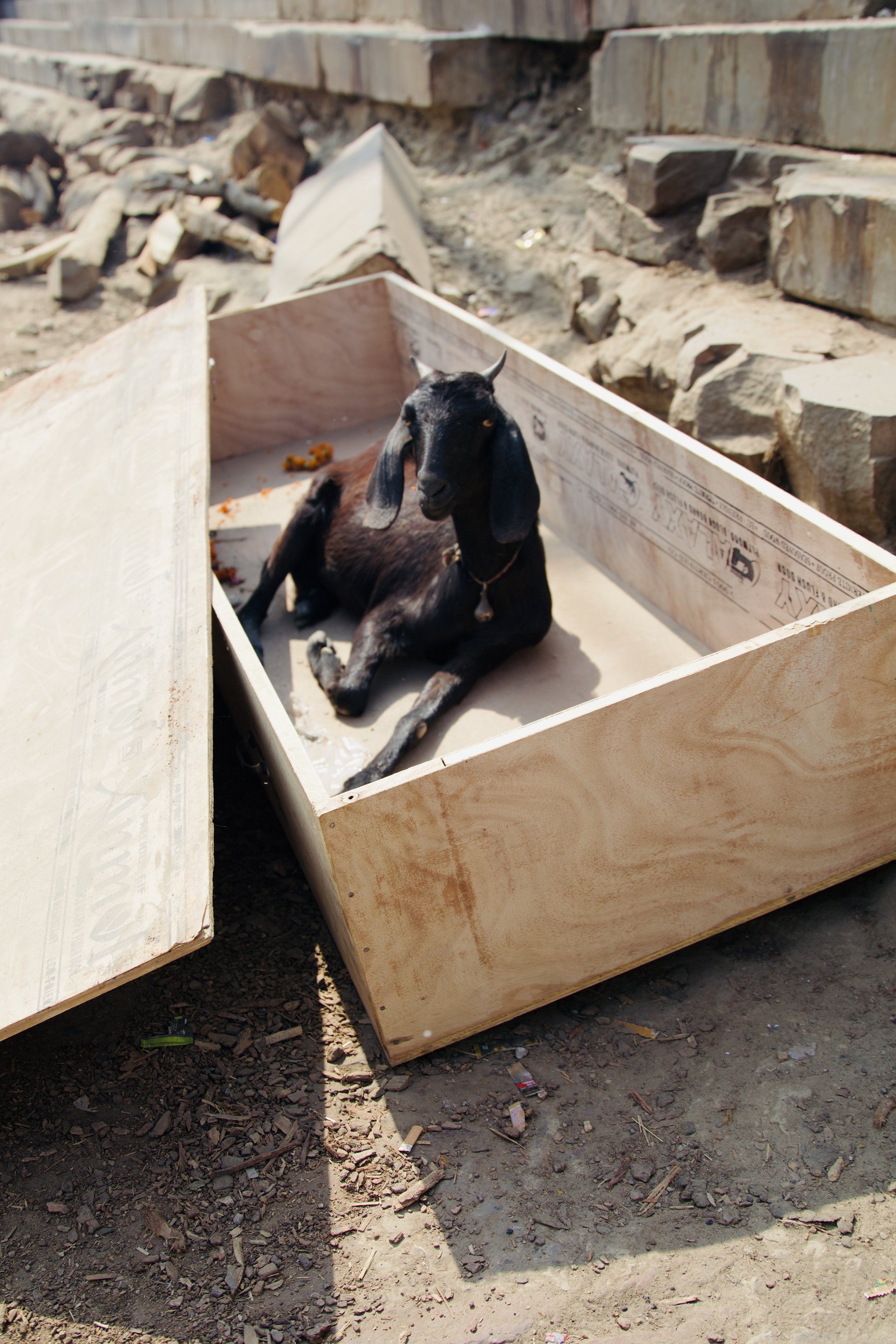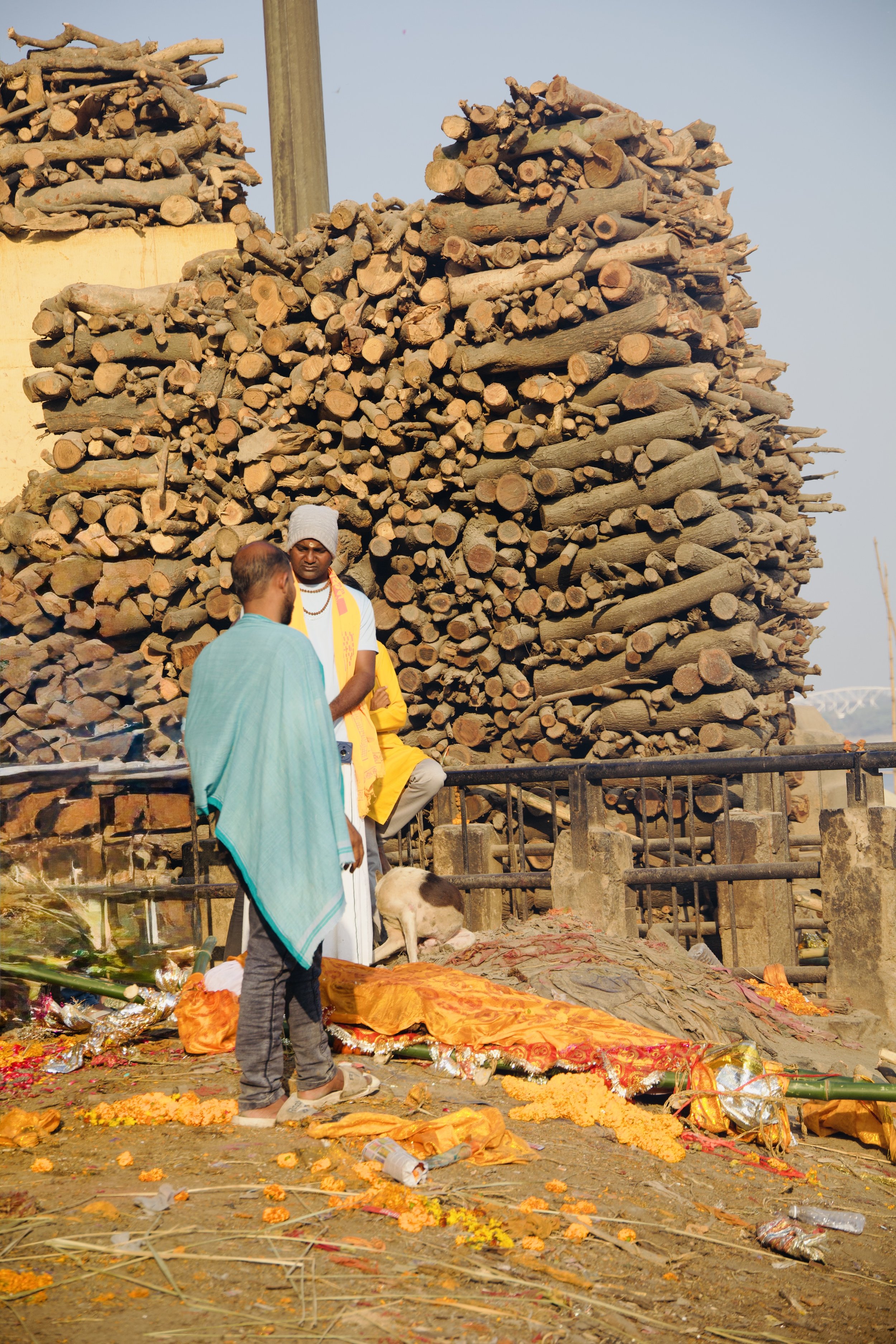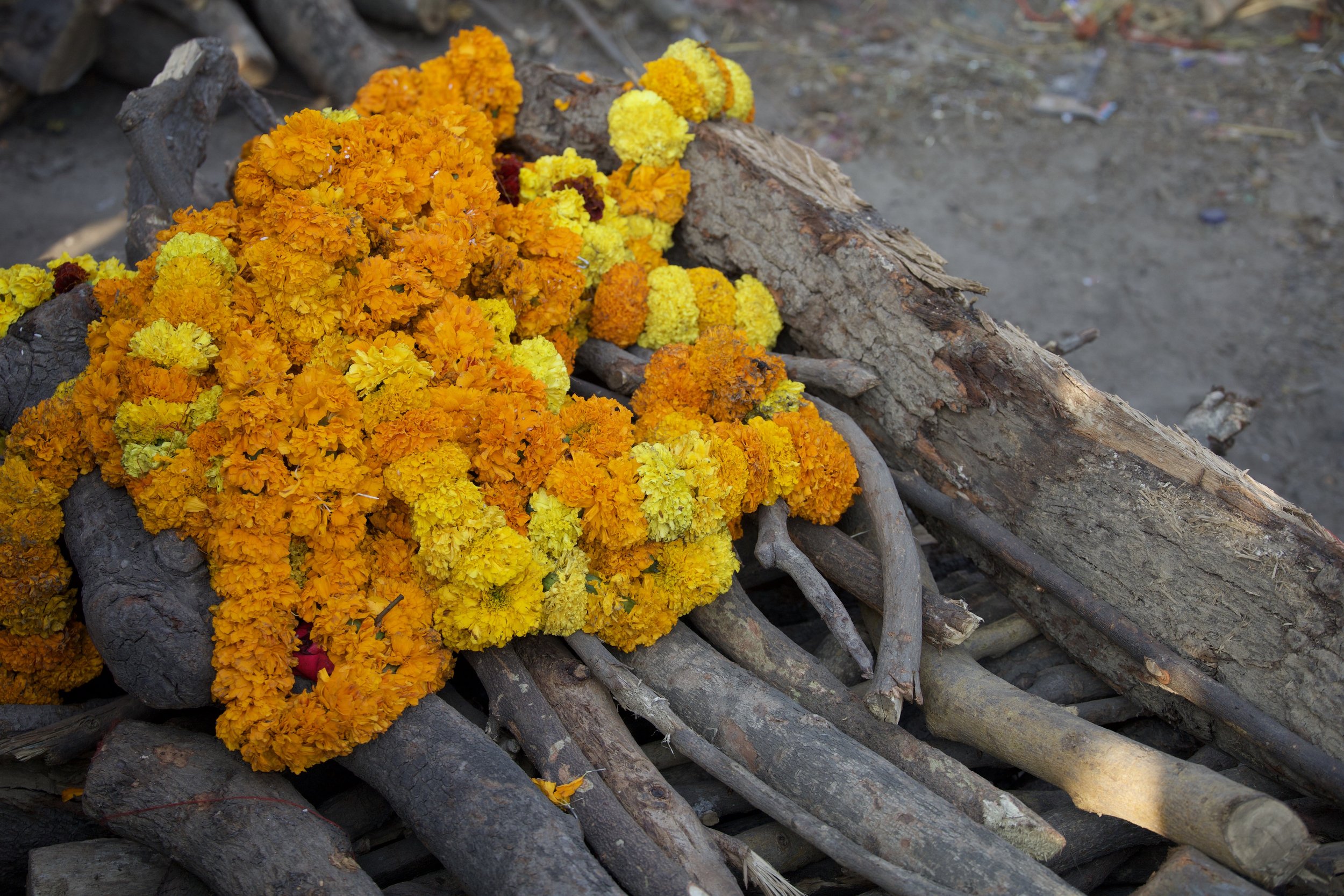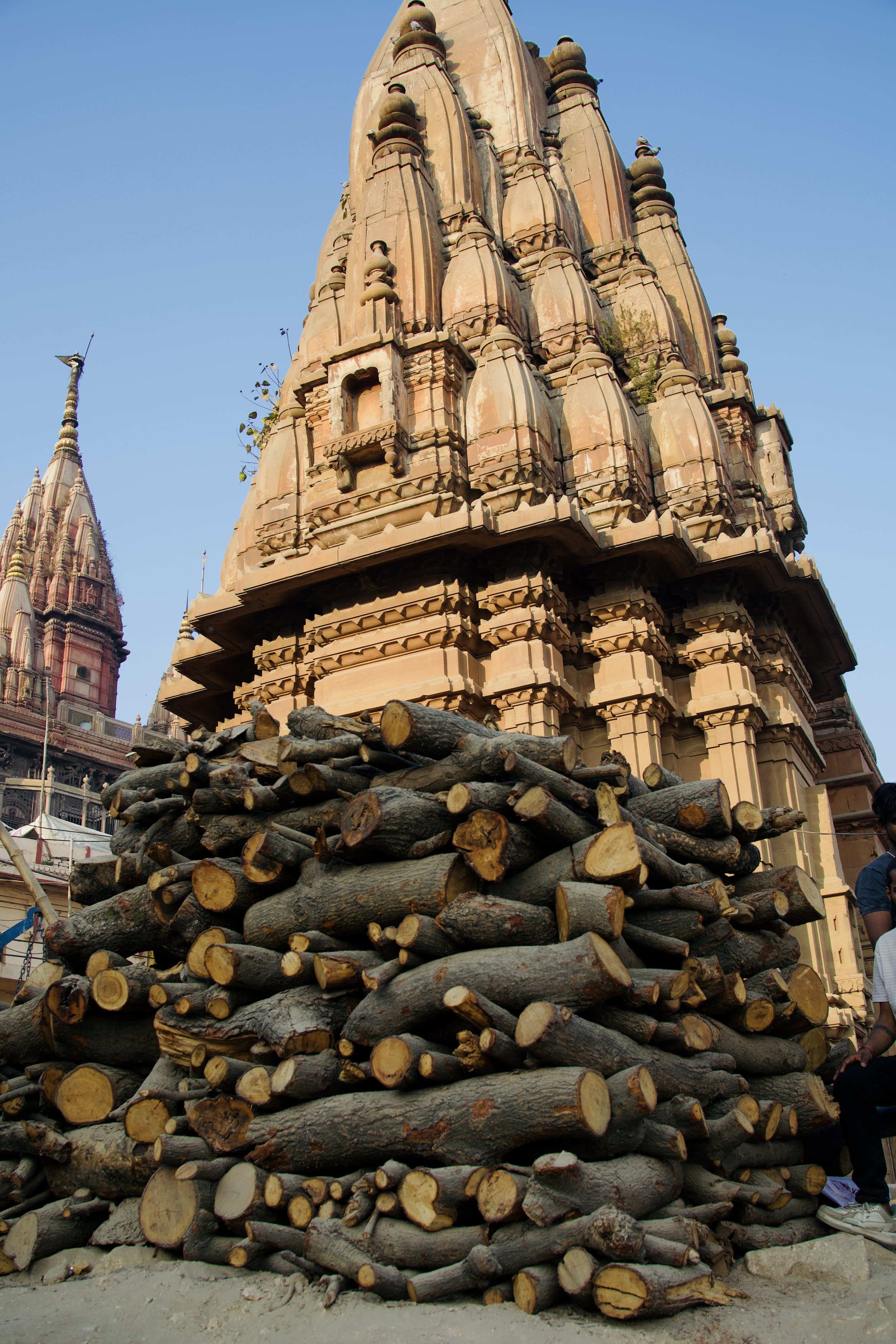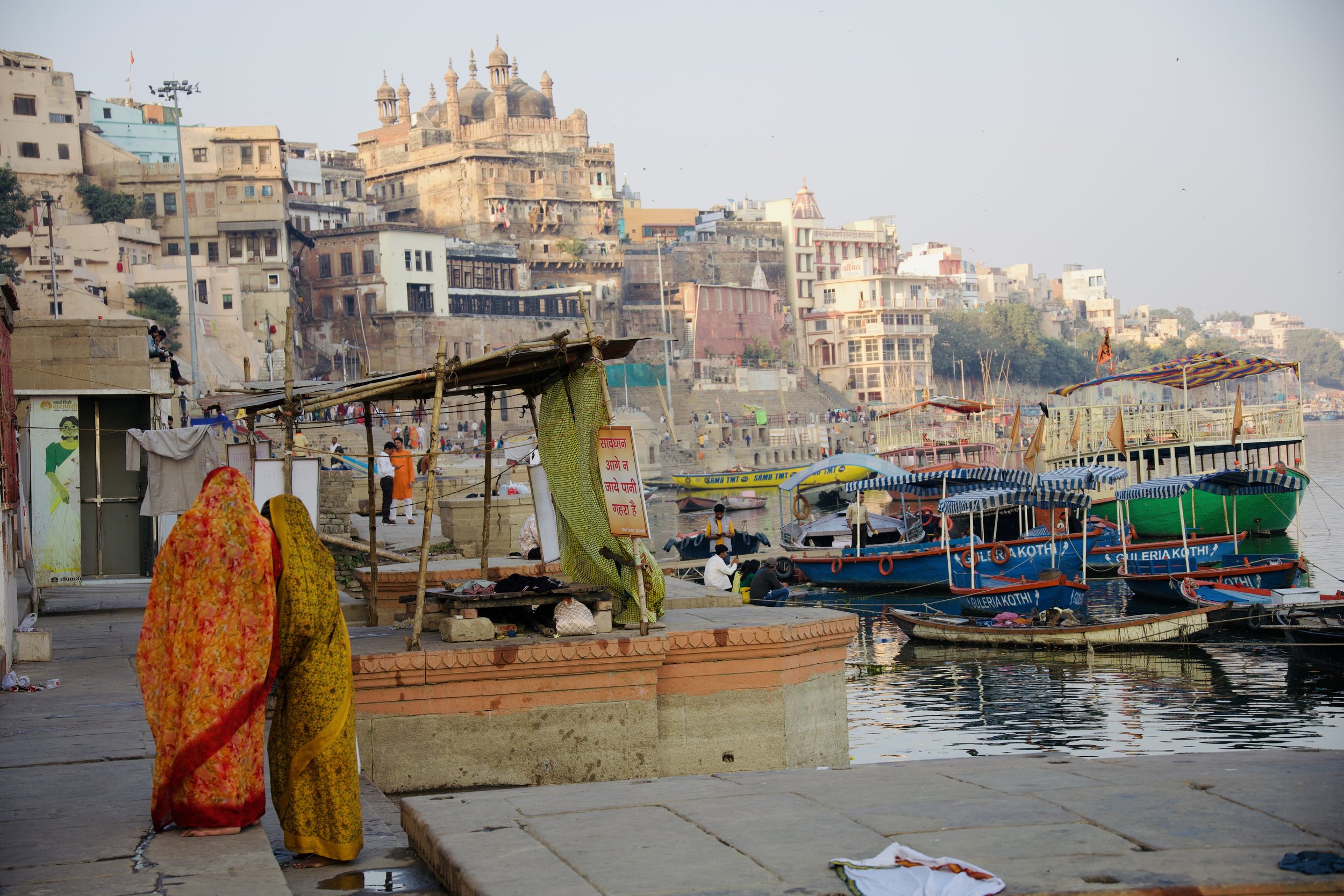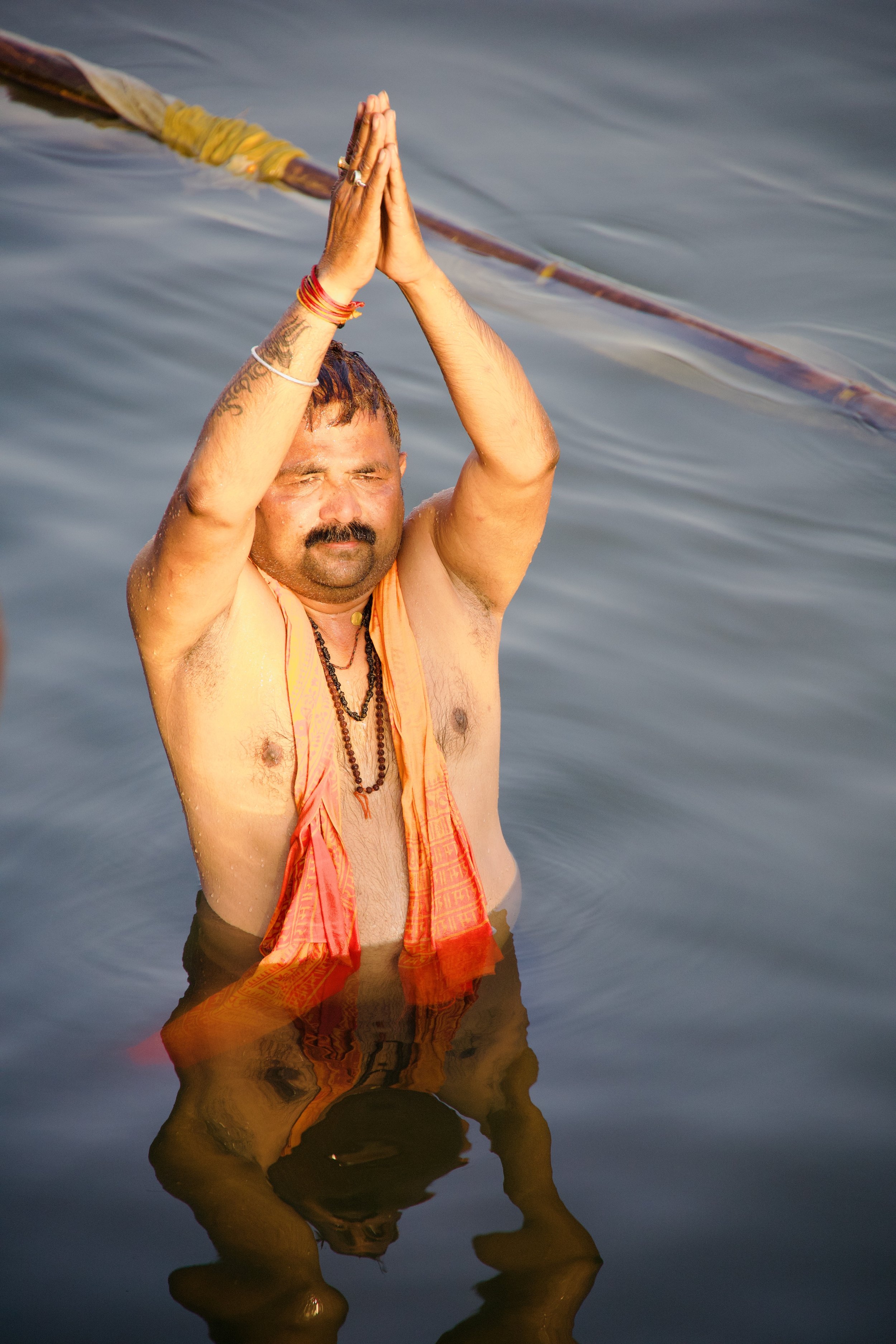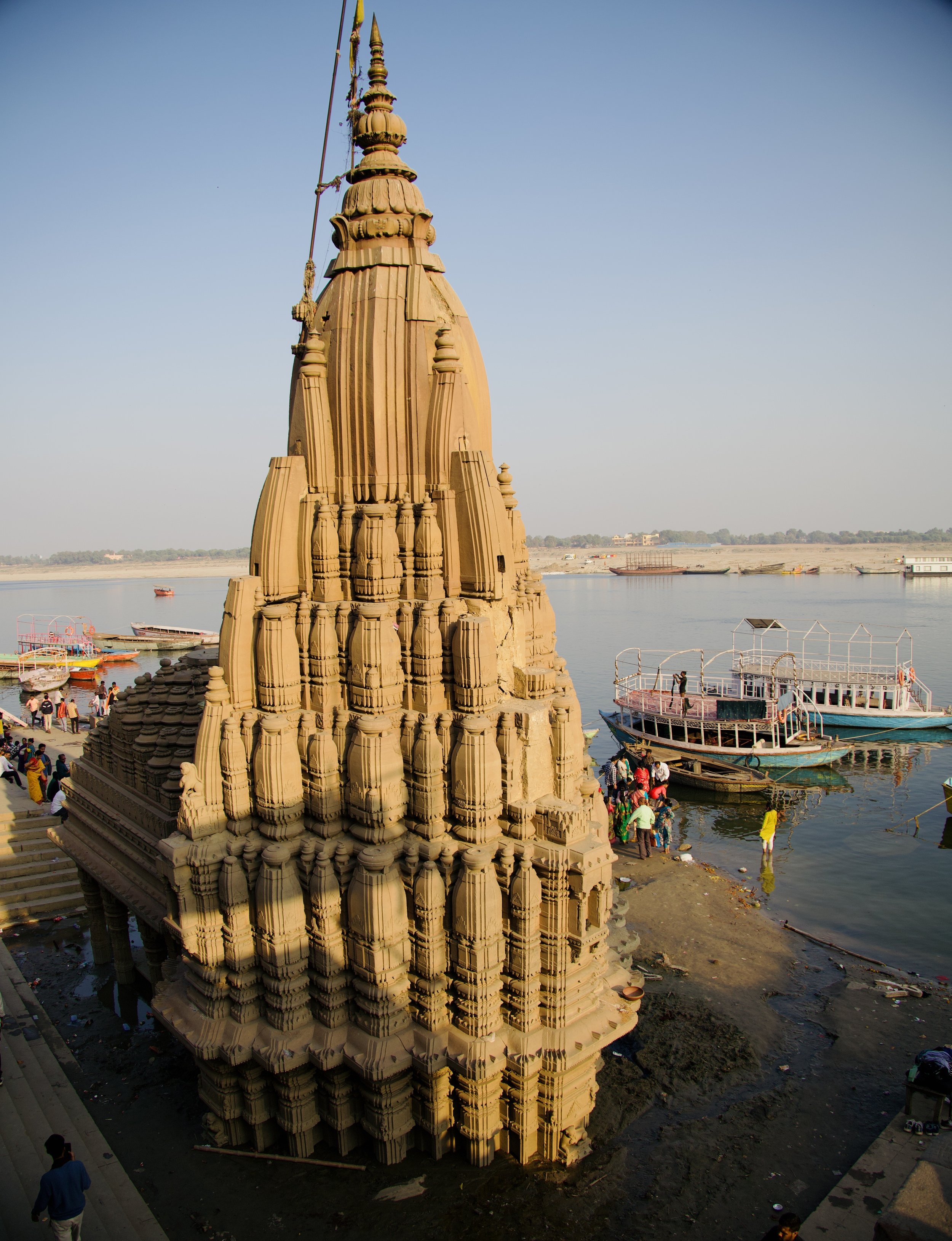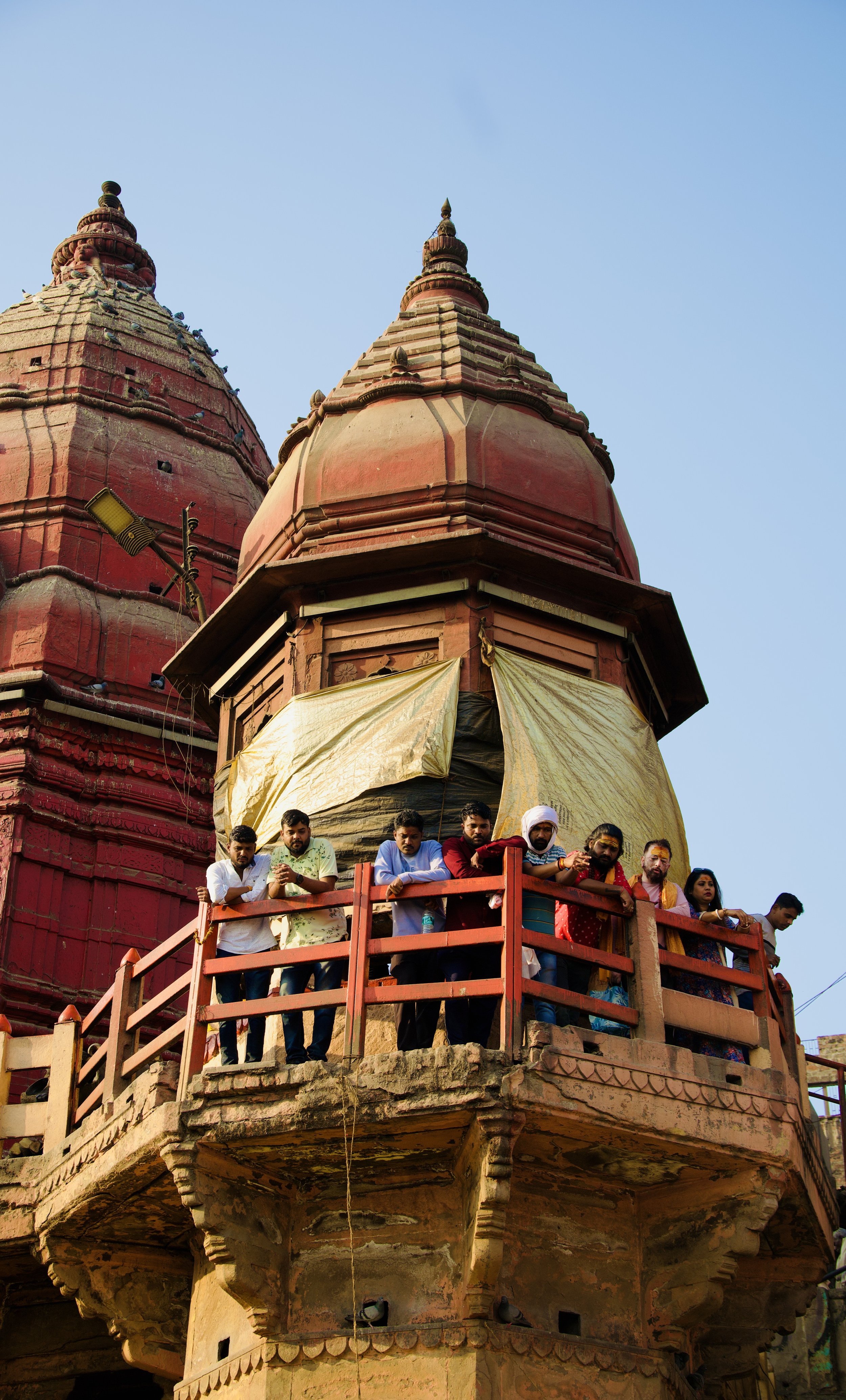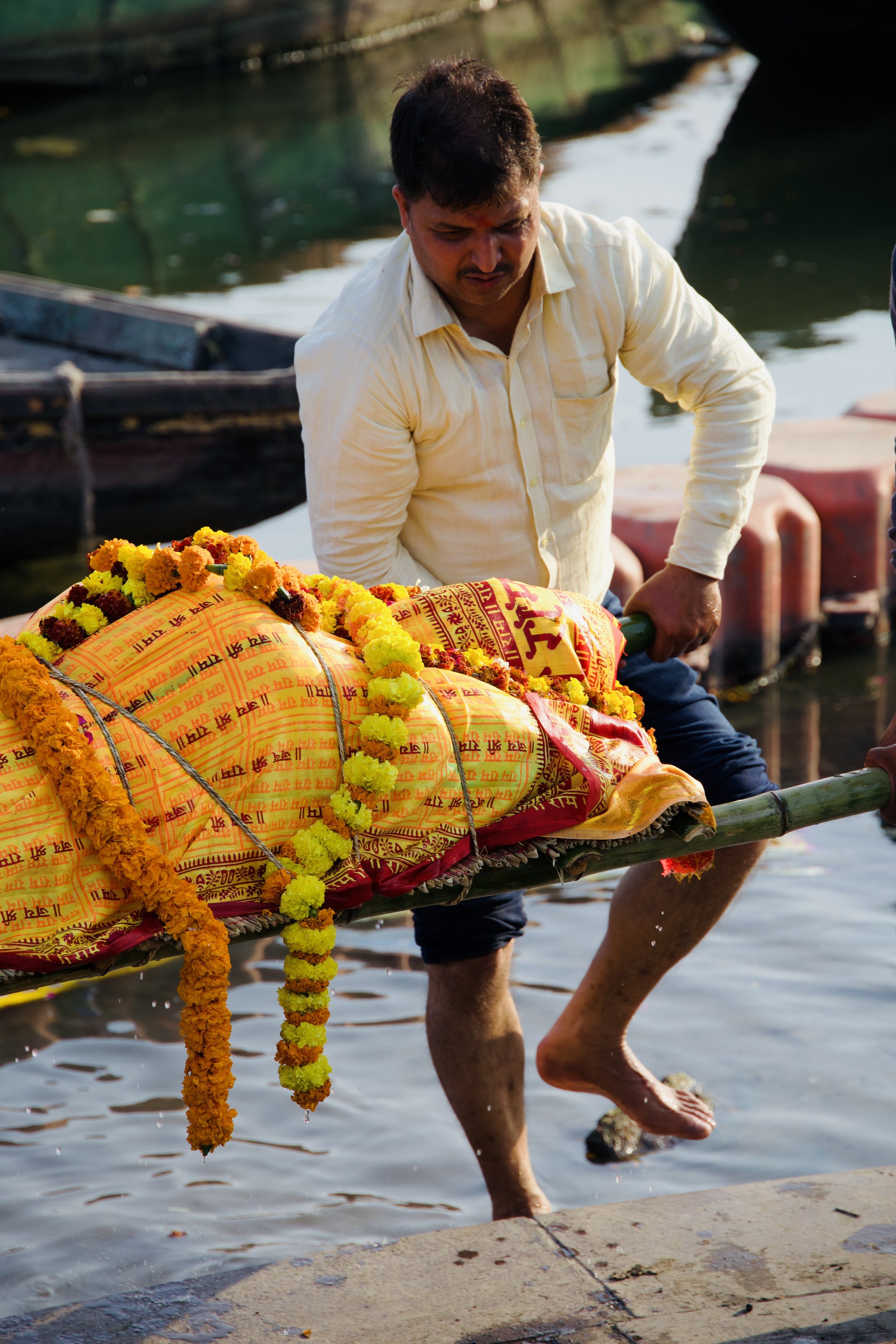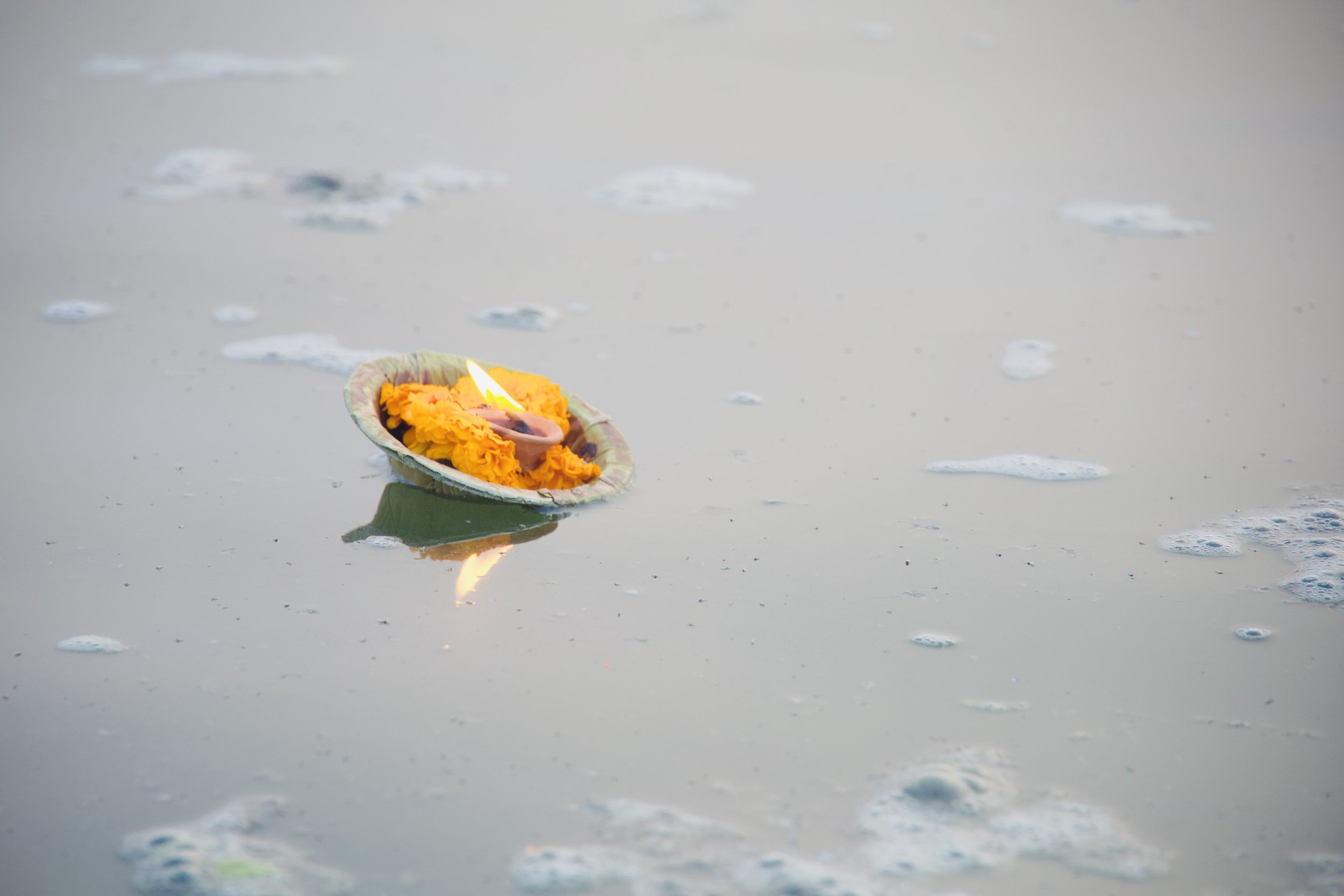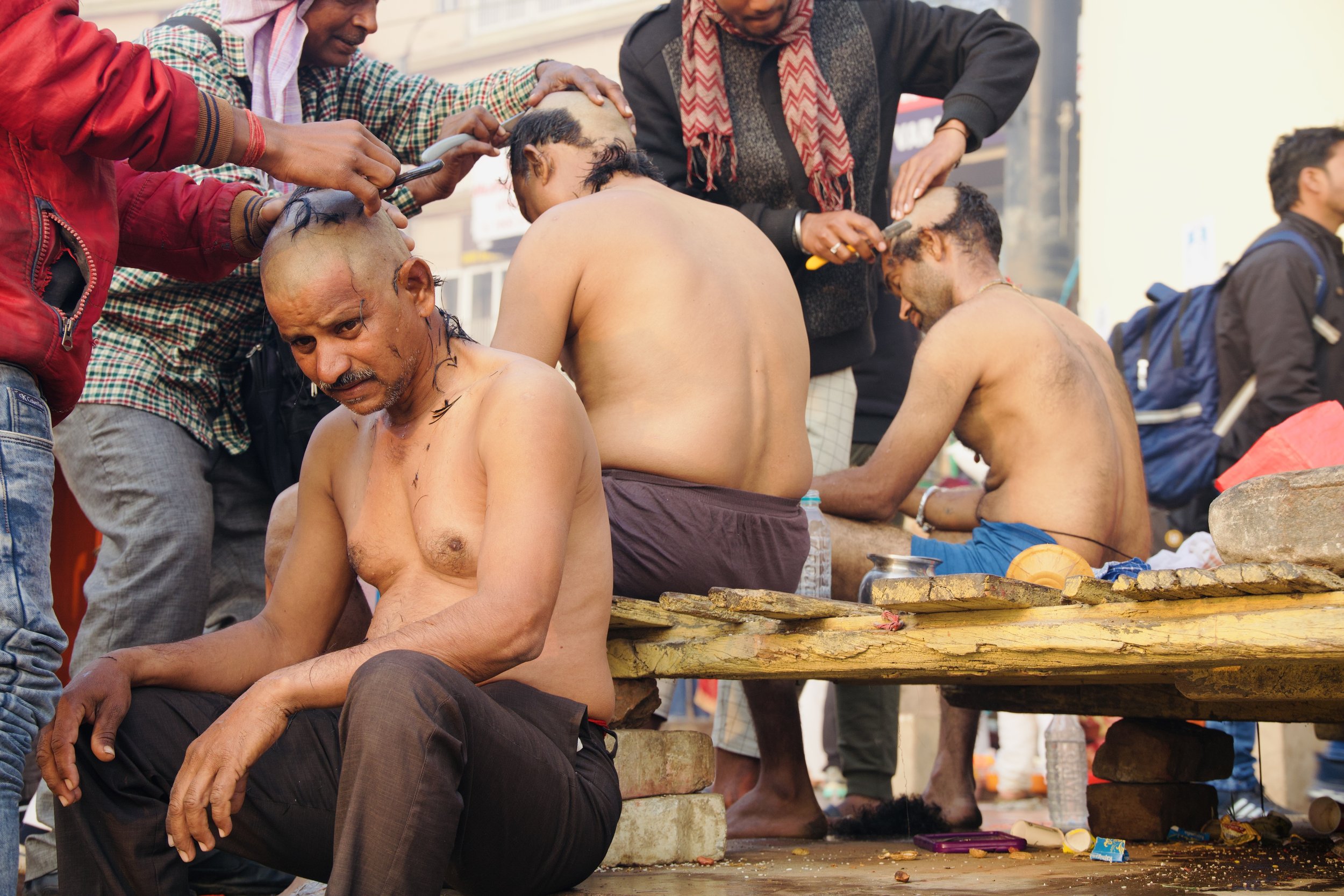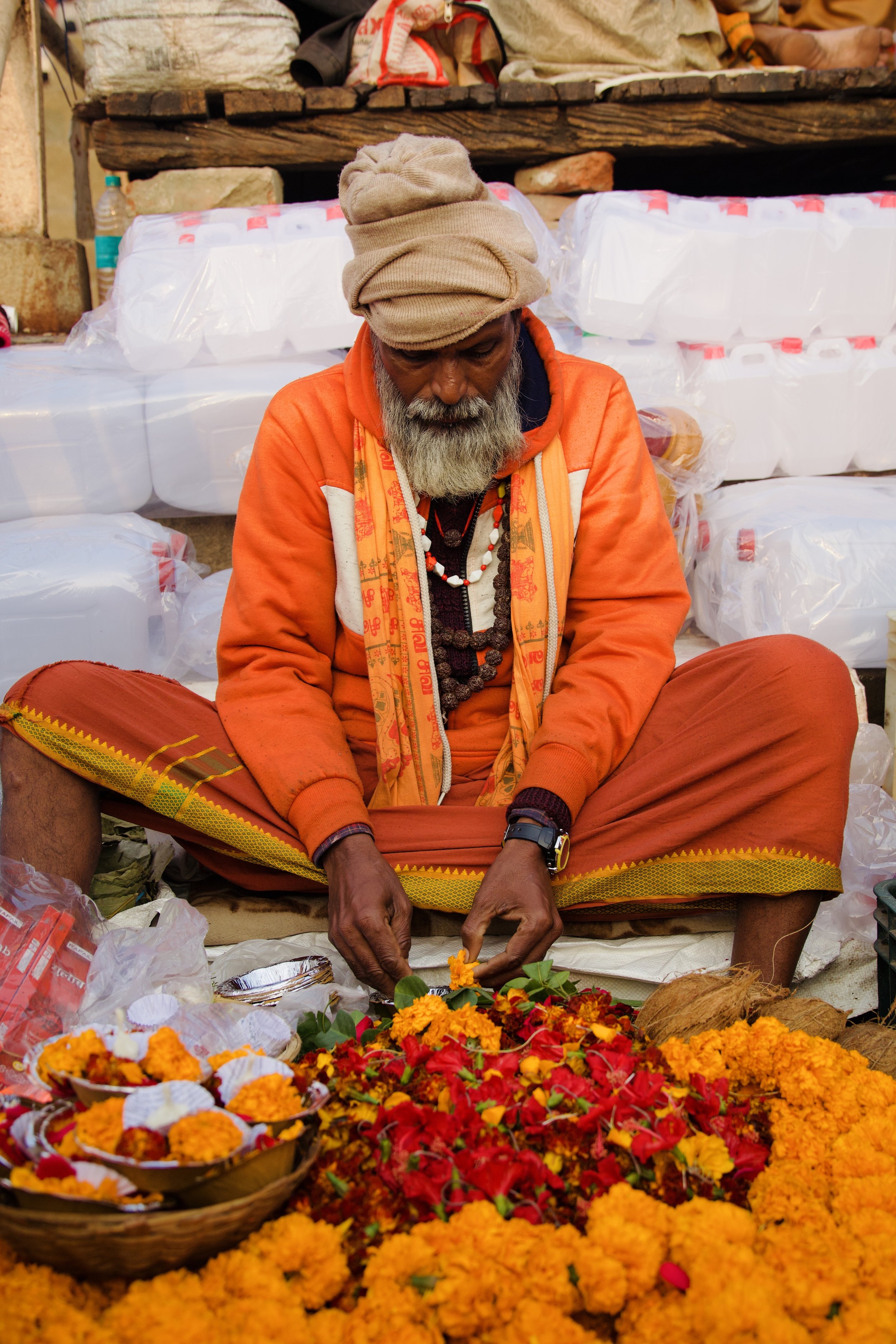
Cremation Practices in Varanasi
and the Kapal Kriya Ritual
You know you’re in the city of the dead because the air itself carries the weight of it. Fine grey ash drifts down like snow, settling softly on your skin, a quiet reminder that someone’s body is burning nearby. It clings to your cheek, to your hair, as if the boundary between life and death is thinner here, always brushing against you. The smell of death is thick and inescapable, a mix of woodsmoke and something heavier, more intimate. It seeps into your clothes, lingers at the back of your throat. Along the ghats, the fires never stop. Day and night, bodies arrive and bodies burn, an endless procession of the living delivering the dead to the flames. Here, death is not hidden away. It is everywhere. It is the heat on your face as you stand near the pyres, the sound of bones cracking beneath the fire’s hunger, the river carrying what remains out into the world.
The Significance of Cremation
In Hinduism, cremation plays a central role in the soul's journey. It’s believed that the body, though deeply respected, is just a temporary form. The soul is meant to move beyond this physical realm, continuing its path through samsara—the endless cycle of birth, death, and rebirth. In Varanasi, the act of cremation takes on even greater spiritual significance. The city's ghats, particularly Manikarnika and Harishchandra, are seen as places where liberation, or moksha, can be attained. For Hindus, this freedom from samsara is the ultimate goal, representing release from the cycle of suffering that accompanies reincarnation.
During my time in Varanasi, I saw families gathered at the ghats, each one preparing for the final moments with a deep sense of peace. It was beautifully clear that the rituals surrounding death are not merely about mourning but about honouring the transition of the soul, helping it take its next step toward liberation. Many elderly individuals travel to Varanasi in their final days, hoping to be cremated along the Ganges, believing that doing so will grant them moksha. The energy in the city, with its centuries-old traditions, makes it feel like a place where time itself is both preserved and transcended. I could sense the sacredness of the river and its role in the purification process, as families brought the ashes of their loved ones to be immersed in the Ganges, marking the final release from earthly existence.
The Cremation Process
The process of cremation in Varanasi is both practical and spiritual. The body is prepared with great care, often washed and anointed with ghee, signifying purification. As the body is dressed, the colour of the cloth is chosen according to the individual’s social and marital status, and flowers, like marigolds, are draped over it as symbols of life and death.
I followed the funeral procession down the streets of Varanasi, watching as the mourners chanted "Ram naam satya hai", acknowledging the truth of life’s fleeting nature. The procession was a deeply personal moment for the family, yet at the same time, it unfolded in the public space, connecting the living to the spiritual world. As the body was laid on the banks of the Ganges for a final cleansing, the chanting and ritual brought a solemnity to the air that contrasted with the busy, vibrant life of the city.
At the ghats, the funeral pyre was constructed with different types of wood—sandalwood for the wealthy and mango or sal for others—each choice a reflection of the family's financial circumstances. The eldest son typically assumes the responsibility of lighting the pyre, a task that is deeply symbolic. This is a role of great importance, as it represents the continuity of life and death, and the connection between the earthly realm and the divine. For me personally, I find it a beautiful thing to bear witness to—the flames rising and consuming the body, the transition of the soul from the physical to the spiritual realm, and the quiet acceptance that death is not an end, but a continuation in another form.
The Role of Family and the Eldest Son’s Duties
The cremation process also reveals the deep role family plays in this sacred rite. The eldest son is entrusted with significant responsibilities, beginning with the ritual shaving of his head, symbolising his renunciation of vanity and ego. I saw this taking place on the ghats by the Ganga, where the son’s transformation into the guide for the soul’s journey was marked by this physical and spiritual act of humility, as the son’s transformation into the guide for the soul’s journey was marked by this physical and spiritual act of humility.
After the cremation, the family enters a period of mourning, which lasts for thirteen days. During this time, the eldest son performs daily rituals, including Pind Daan, where offerings are made to help ease the soul’s transition. The entire family participates in these practices, ensuring that the soul is cared for and guided. It’s fascinating to see how death becomes a collective responsibility, binding the living and the dead together in a shared journey.
Kapal Kriya: Releasing the Soul
Kapal Kriya is one of the most significant and solemn rites in the Hindu cremation process. It involves the eldest son or chief mourner gently pressing or striking the skull of the deceased with a bamboo stick, a ritual believed to release the soul from its physical body and ensure its smooth passage to the afterlife. This act is considered the final duty of the mourner, a deeply symbolic gesture that severs the last ties between the soul and the material world.
Although I didn’t witness it myself, locals shared its importance with me, describing how the cracking sound of the skull represents the ultimate liberation—the moment the soul is freed from its earthly vessel and allowed to continue its journey towards moksha, or spiritual liberation. It is a sacred duty that carries immense spiritual weight. The eldest son, or the designated mourner, performs this ritual, embodying the responsibility of guiding their loved one beyond the constraints of life and death.
For those present, this moment is the culmination of the cremation rites and reinforces the belief that the soul does not die but simply moves forward. The entire process, from the lighting of the pyre to the final breaking of the skull, is a carefully choreographed passage—a way of honouring the deceased and assisting them in their journey beyond the mortal realm.
Manikarnika and Harishchandra Ghats
Manikarnika and Harishchandra Ghats are two of the most significant cremation sites in Varanasi. Each is steeped in myth, tradition, and spiritual power. Manikarnika, in particular, is known for its unbroken flame—believed to have been burning for millennia—and for its role in the liberation of souls. From my guesthouse, I could see the ghat and the procession of funeral pyres each night. I would spend hours on the rooftop, meditating or flowing on my yoga mat. Afterwards, I’d sit in the stillness, watching the glow of the flames reflected on the surface of the Ganges, casting a haunting beauty over the scene. It felt like time stood still in those moments. They were precious moments—moments just for me. The air was filled with prayers and rituals, their steady rhythm sinking into me. My mind emptied in those moments, and I sat with a sense of gratitude and contentment.
Harishchandra Ghat, named after the legendary King Harishchandra, holds its own significance. It is here that people from all walks of life, including those from castes that would traditionally be excluded from such rituals, are cremated. The ghat carries with it a message of equality and truth, both in life and in death. I loved going to that ghat—it made my heart smile knowing that here, unity and equality were ever present, with a real acknowledgment that death is the ultimate equaliser, reminding us all of our shared humanity.
The Role of Fire
Fire is a powerful symbol in Hinduism, representing both creation and destruction. It plays a central role in the cremation process, as the flames purify the body and help the soul detach from the physical world. The fire at the pyre is not just a source of heat; it’s seen as a divine force, a sacred element that assists the soul in its journey toward liberation. The flames are thought to carry the soul closer to spiritual freedom, burning away earthly attachments and leaving the soul free to transcend.
As I stood by the ghats, watching the flames dance and crackle, I felt connected to the fire's spiritual significance. There was something incredibly raw and powerful about the way the flames consumed everything in their path, transforming it into pure energy. I couldn’t help but think of my own experiences of letting go—how sometimes it takes a fire, metaphorical or literal, to burn away what no longer serves us. The fire, in this moment, was a mirror to the process of transformation and release. It was impossible not to see how the fire symbolised both the end of one journey and the beginning of another. As the flames flickered in the twilight, it felt as though they were guiding the soul on its final step, helping it navigate the unknown, and leading it toward a sense of peace and liberation. I felt deeply connected to this idea, as though the flames were quietly whispering to me about the cycles of life and death and the power we each hold to transform, release, and move forward.
